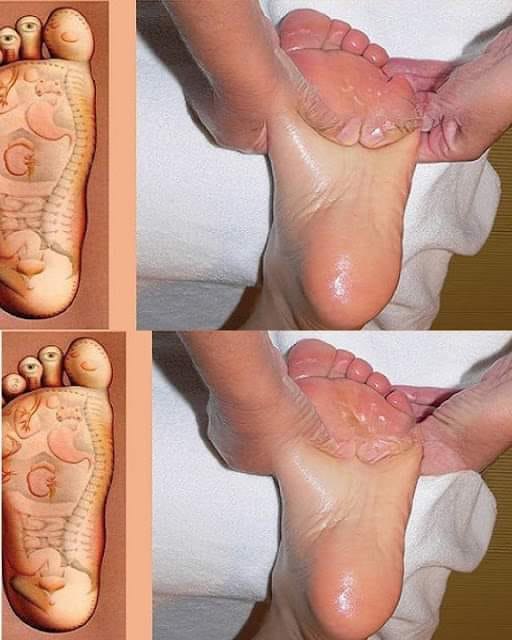Nightly Foot Massage Recipe: Your Path to Better Sleep & Relaxation
Foot massages are a simple yet incredibly effective self-care practice that can enhance your overall well-being. This nightly ritual not only helps with physical relaxation, but also promotes mental and emotional well-being. The benefits are plenty – from alleviating stress to improving circulation and fostering better sleep.
Here’s the Complete Recipe for a Nightly Foot Massage:
Ingredients:
- Massage Oil or Lotion
- Choose a soothing oil or lotion, such as lavender, chamomile, or eucalyptus, which are known for their calming properties.
- Coconut oil, almond oil, or a specific foot massage lotion also works well.
- Quiet, Comfortable Space
- A cozy, undisturbed area where you can relax and focus on the massage.
- Optional: Warm Towel
- If you prefer extra relaxation, consider warming a small towel to wrap around your feet before the massage.
Steps to a Perfect Foot Massage:
- Prepare Your Space:
- Find a quiet spot in your home where you can sit comfortably. It could be your bed, a cushioned chair, or any relaxing corner.
- If you like, dim the lights or light a candle for an added sense of calm.
- Gather Your Supplies:
- Make sure your massage oil or lotion is ready and within reach.
- Optionally, warm a small towel and drape it over your feet for a few minutes to relax the muscles.
- Apply the Oil/Lotion:
- Pour a small amount of massage oil or lotion into your hands and rub them together to warm it up.
- Apply it gently to the tops and soles of your feet, using a thin layer to reduce friction.
- Begin with Gentle Strokes:
- Start by gently massaging the top and bottom of your feet. Use long, sweeping strokes from the toes toward the heels, focusing on easing any tension.
- This initial step helps prepare the muscles for deeper work.
- Pressure Point Focus:
- Use your thumbs or fingers to apply gentle pressure to specific pressure points on your feet. You can use a chart for reference or simply listen to your body. Areas that feel particularly tense or tender should get extra attention.
- Common pressure points include:
- The ball of the foot: To alleviate stress.
- The arch: To improve circulation and relieve discomfort.
- The heel: Especially helpful for those with plantar fasciitis.
- Gradually Increase Pressure:
- As you move through the massage, gradually increase the pressure, especially in areas where you feel tightness or discomfort. However, keep it within a level that feels relaxing—not painful.
- Massage Both Feet:
- Spend at least 5–10 minutes on each foot to ensure balanced relaxation.
- Repeat the same process on your second foot to create symmetry in the massage.
- End with Gentle Strokes:
- Finish by lightly stroking the feet and ankles to calm the muscles and promote complete relaxation.
- Relax and Enjoy:
- After the massage, take a few moments to lay back and enjoy the calm. This is the ideal time to ease into your bedtime routine.
Benefits of the Nightly Foot Massage:
- Stress Relief: Foot massage stimulates reflexology points, which can reduce stress and tension.
- Improved Circulation: Helps increase blood flow, especially beneficial for those who stand or sit for long periods.
- Better Sleep: The calming effect on both the body and mind can make it easier to drift off to sleep.
- Pain Relief: Provides relief from common foot ailments, like heel pain, arch discomfort, or swollen ankles.
- Overall Well-Being: The practice of taking time for yourself fosters mindfulness and boosts emotional health.
Q&A: Common Questions About Foot Massage
Q1: How often should I do a foot massage?
A1: Ideally, a nightly foot massage is best for reaping the benefits. However, even doing it a few times a week can help. Consistency is key for relaxation and improved sleep.
Q2: Can I use any type of lotion for the massage?
A2: Yes, but it’s best to choose a lotion with soothing properties. Lavender or chamomile-based lotions are excellent choices for their calming effects. Avoid using harsh or overly-scented products that might irritate the skin.
Q3: How long should the massage last?
A3: 10-15 minutes per foot is ideal. You can extend the time if you’re enjoying the experience, but 5–10 minutes per foot should provide sufficient benefits.
Q4: What if I have sensitive feet or certain conditions (like plantar fasciitis)?
A4: If you have sensitive feet or specific conditions, start with gentle pressure and gradually increase. Focus on tender areas and be mindful not to apply too much pressure on painful spots. If needed, consult a specialist for personalized advice.
Q5: Is it okay to use a foot massager?
A5: Absolutely! Foot massagers can offer additional relief and help with circulation. If you prefer mechanical help, it can be a good complement to the hand massage.
Q6: Can foot massages help with anxiety or insomnia?
A6: Yes! Regular foot massages can help reduce anxiety, improve relaxation, and induce sleepiness by activating the body’s parasympathetic nervous system.
Conclusion:
Incorporating a nightly foot massage into your routine can do wonders for your body and mind. Not only will it help you unwind and reduce stress, but it can also improve circulation, relieve pain, and enhance your sleep. Treat yourself to this simple yet luxurious practice every night and feel the transformation in both your physical health and emotional well-being.

